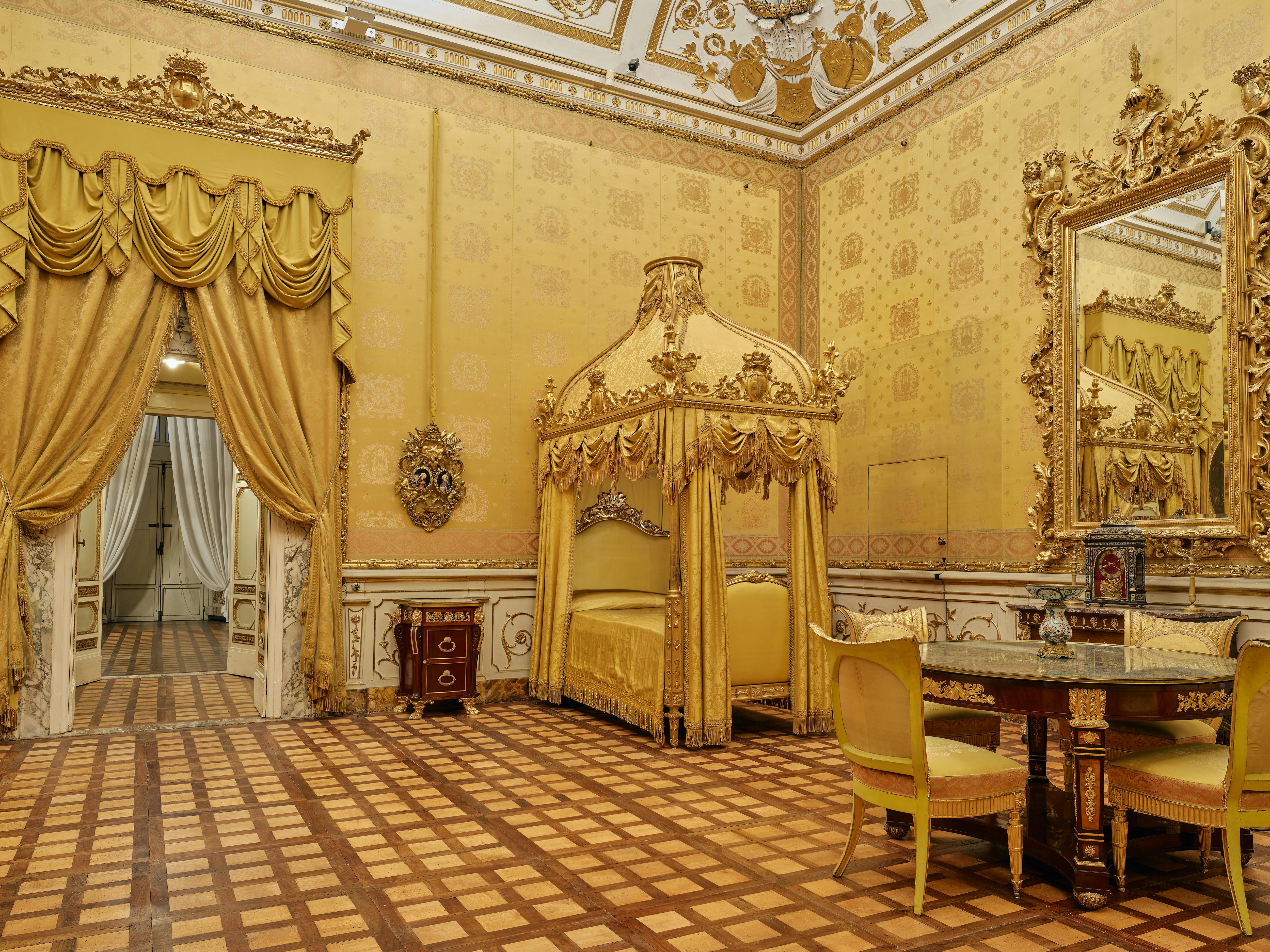History | Royal Apartments | Pitti Palace
The Royal and Imperial Apartments were inhabited, mostly in the winter, by the Medici and Habsburg-Lorraine dynasties at the time of the Grand Dukes of Tuscany and subsequently by the Royal House of Savoy. The series of ten rooms on the South side of the palace, and the other four rooms at right angles to them, host works of art of extraordinary quality and quantity in a vast array of categories, from paintings to sculptures, engravings, tapestries and semi-precious stone inlays.
Over the three centuries in which they were at the centre of court life, namely from the time the Medici went to live in the palace in the 17th century to when Victor Emmanuel III of the House of Savoy transferred it to state ownership (1919), the Royal and Imperial Apartments were used mainly for ceremonial purposes.
The tour of the Apartments starts from the Green Room, formerly the antechamber of Ferdinando de’ Medici, and proceeds to the Throne Room, the Medici’s “Audience Room” and the “Chamberlains’ Room” in the Lorraine period. With the arrival of the Savoy this room was used as the Throne Room and for this reason the canopy with the House of Savoy’s coat of arms was hung. Continuing the tour we find the Chapel, the only part of the apartments that preserves its original Late Baroque decoration dating back to the Medici period. Originally this was Grand Prince of Tuscany Ferdinando de’ Medici’s alcove, transformed in the Habsburg-Lorraine period into a chapel. The Parrot Room, then as today, was the passageway between the Apartment of Queen Margherita and the Apartment of King Umberto. In the Habsburg-Lorraine era the rooms at the southern end of the Palace were reserved for the Grand Duchess, while the internal rooms were used by Grand Duke of Tuscany Peter Leopold.
